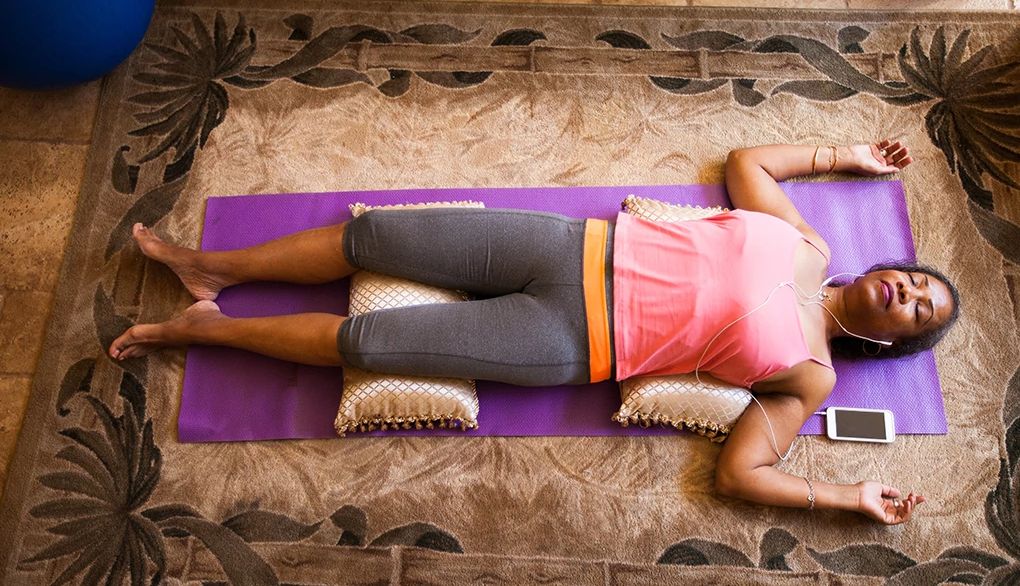Challenges


This copyrighted information is courtesy of Mindful.org
There is a direct link to your exhale and your ruminating thoughts. If you ever notice when you sigh, it's usually after you have resolved something in your mind and your body naturally exhales it out. The practice of extending your exhalation leads to both mental and physical stillness due to the influence that it has on the vagus nerve.
The longer exhales signal a state of relaxation by the vagus nerve, which results in further relaxation. This is a breathing exercise that is a basic 1:2 ratio breath that will help with relaxation and sleep. You can do this exercise either sitting or lying down, but I recommend lying down as the goal is to slow you down so that you can fall asleep.
How To
A Breathing Practice to Let Your Body and Mind Get Sleepy
- Lay down in bed on your back with your hands to your sides, palms up, and your legs and arms uncrossed. We are going to begin by taking a few deep breaths. Inhale deep, then exhale it all out.
- Continue to breathe at your own pace. By now, your breath may have become rhythmic. If this has not happened, begin to count mentally from one to four on inhalation and from one to four on exhalation. An example would be to inhale for one, two, three, four, and exhale for one, two, three, four. Continue to breathe with the four-second count on your inhalation and the four-second count on your exhalation.
- Now that you have a smooth and even rhythm established, begin counting to four on the inhalation and five on the exhalation. An example would be: Inhale for one, two, three, four, and exhale for one, two, three, four, five. Continue breathing, on the inhalation with that four count and on the exhalation with the five count.
- Now continue with the four-count on the inhalation, but on the exhalation, count to six: Inhale for one, two, three, four, and exhale for one, two, three, four, five, six. Continue breathing, inhaling for the four count and exhaling for the six count.
- Now we're increasing our inhalation to a seven count. An example would be inhale for one, two, three, four, and exhale for one, two, three, four, five, six, seven. Continue breathing, inhaling for the four count and exhaling for the seven count.
- Finally, we've reached the 1:2 ratio by inhaling for a four count and exhaling for an eight count. An example would be inhale for one, two, three, four, and exhale for one, two, three, four, five, six, seven, eight. Breathing in for the four count, breathing out for the eight count. Continue to maintain this 1:2 ratio, until your body and mind fall asleep.











More From Staying Sharp
Feeling Stressed? Phone a Friend
Calling people in your social circle may lift your mood
Could This Blanket Help Your Sleep?
Study suggests that it may improve slumber quality and mental health
For Better Slumber, Keep a Sleep Diary
This tool reveals the hidden habits that can sabotage a good night’s rest